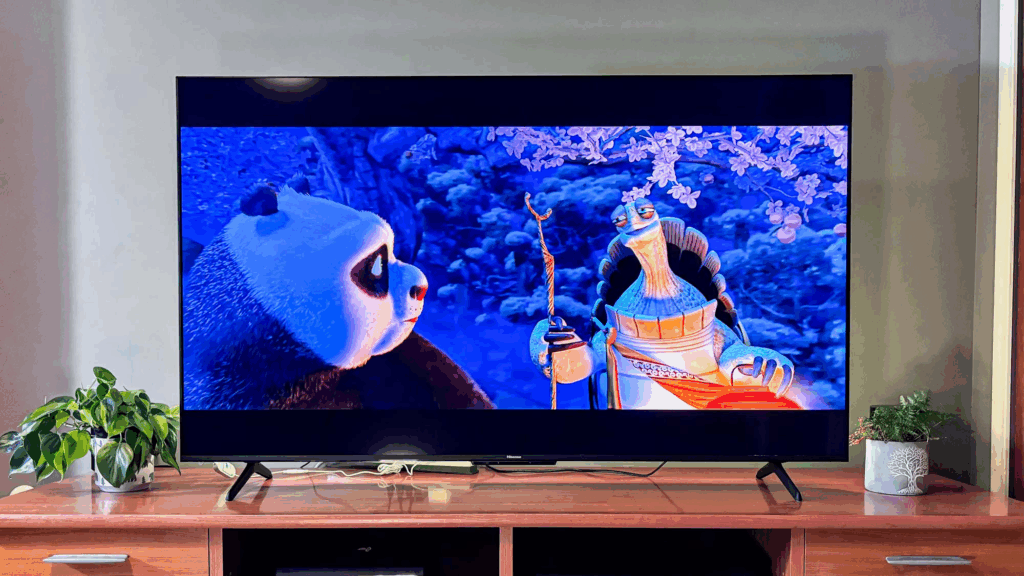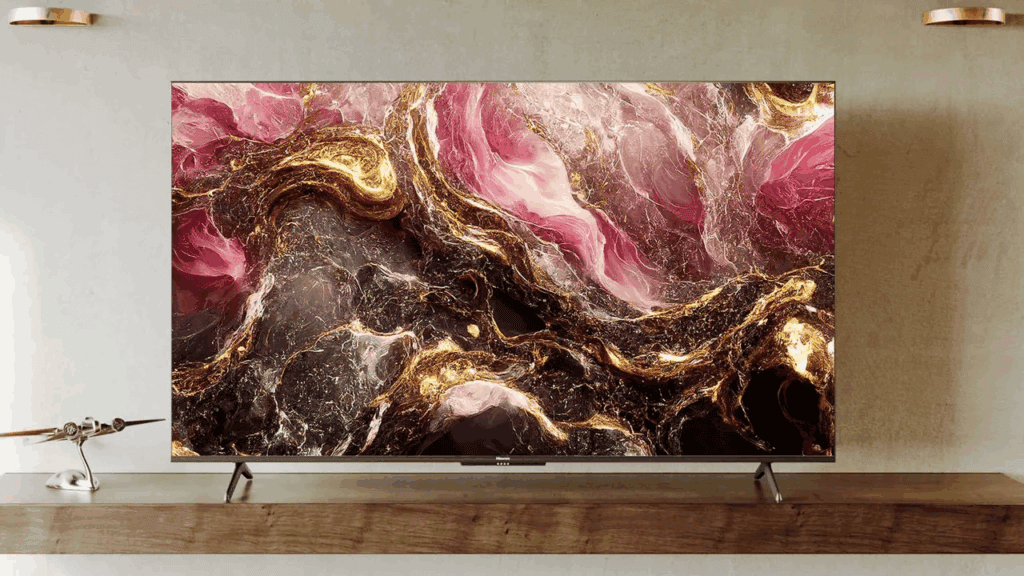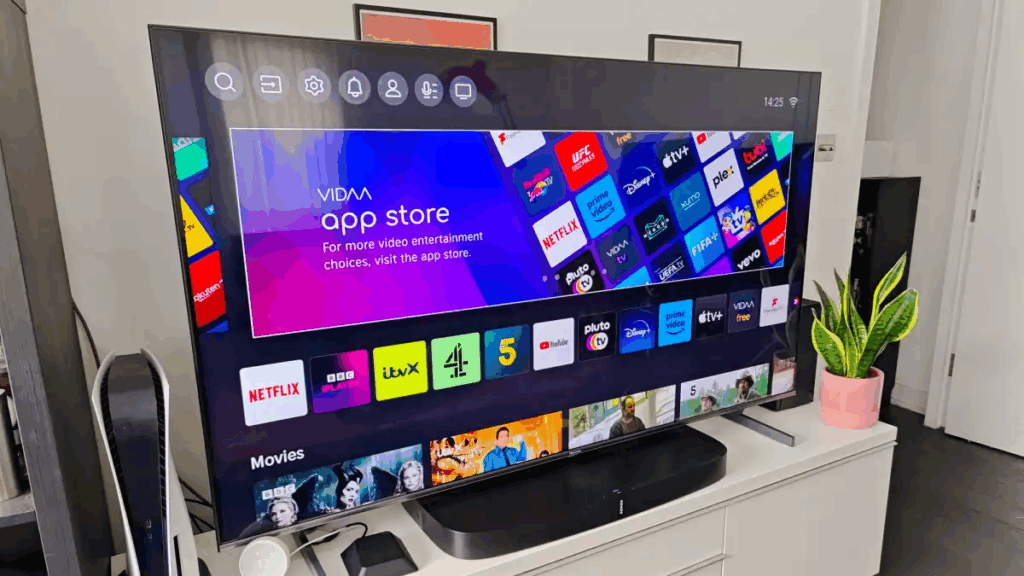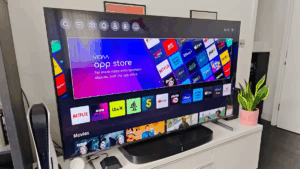The Hisense U6K has been billed as one of the best bang-for-your-buck TVs in 2023–2024, especially with its use of Mini-LED technology, quantum dot color enhancement, and full array local dimming. On paper, it looks like a solid performer, particularly at its sub-$600 price tag for the 55-inch model. It promises premium features at a mid-range price, an appealing pitch for anyone upgrading their living room display without breaking the bank.
But a deeper look tells a different story. Beneath the spec sheet gloss and budget-friendly appeal are a number of real-world drawbacks that potential buyers should seriously consider. This blog post pulls no punches, offering a comprehensive breakdown of the Hisense U6K’s shortcomings so you can make an informed decision.
Table of Contents
- 1 Build Quality That Feels Budget, Because It Is
- 2 Reflections That Kill Daytime Viewing
- 3 Clunky, Ad-Laden Google TV Interface
- 4 Underwhelming HDR and Local Dimming Glitches
- 5 Weak Viewing Angles Hurt Group Viewing
- 6 Gaming Experience Falls Flat for Serious Players
- 7 Audio That Begs for a Soundbar
- 8 Regional Inconsistencies Confuse and Undermine Expectations
- 9 Not Much Progress from Last Year’s Model
- 10 Final Thoughts: A Budget TV That Tries, But Falls Short
Build Quality That Feels Budget, Because It Is
The Hisense U6K might look sleek from the front, but once you move around to the back or start handling it, the compromises in build quality become obvious. The rear casing is made of flexible plastic that gives when pressed, not a huge problem in daily use, but it doesn’t inspire long-term confidence.
Visible screws on the back frame, reminiscent of last year’s odd design choices, give it a slightly unfinished, utilitarian feel. If you plan to wall-mount the TV, one HDMI input sticking straight out of the back will be a pain to access. You might have to invest in angled adapters or rearrange your setup to avoid issues.
Another overlooked design flaw? The TV’s feet. In the narrow position, they only provide 12 inches of clearance between them, too tight for most soundbars to fit underneath. That means either mounting the soundbar awkwardly in front of the TV (blocking part of the screen) or buying a separate riser or shelf. It’s a small detail, but one that reflects a lack of thoughtful design for everyday living spaces.
Reflections That Kill Daytime Viewing

The U6K’s screen has a glossy finish that looks nice when turned off but becomes a real problem when it’s on, especially during the day. Unless you’re placing the TV far from windows or using blackout curtains, expect to see distracting reflections on the panel.
It’s not a subtle issue either. Even ambient indoor light can cause significant glare, flattening contrast and washing out colors. For households with bright living rooms or open floor plans, this could make casual daytime viewing annoying at best, unwatchable at worst.
Clunky, Ad-Laden Google TV Interface
The Hisense U6K runs Google TV version 11. That might sound fine, until you realize that other Hisense models released in the same year ship with version 12. The result is a slightly slower, occasionally buggy user experience, with fewer features and more compatibility issues.
Adding to the frustration are unremovable ads scattered throughout the interface. Whether you’re scrolling through apps or navigating settings, you’re likely to see promotional banners and recommendations that you didn’t ask for.
And here’s a baffling omission: despite Hisense having publicly committed to resolving the issue, the Disney+ app is still not available on the U6K in some regions. If your streaming habits include Disney content, you’ll need a workaround like a separate streaming device, hardly ideal.
The voice assistant integration is also half-baked. There’s a built-in microphone, which is nice, until you decide to turn it off for privacy. Then you’re stuck with a small, always-on light that serves no purpose other than to remind you that the mic is off. It’s a minor annoyance that adds up in a product that feels like it was never fully polished.
Underwhelming HDR and Local Dimming Glitches

The Hisense U6K touts its Mini-LED backlighting and local dimming as headline features, but in practice, these elements don’t deliver the premium experience you might expect. For starters, the brightness is simply not there. In HDR mode, the TV maxes out at around 392 nits, and in SDR, just 309 nits. Hisense claims a 600-nit spec, but real-world performance consistently falls short.
This lack of brightness means Dolby Vision content often looks muted, lacking the dazzling highlights and shadow detail that HDR is supposed to bring. In fact, many users report that the U6K actually looks better in SDR mode with the backlight cranked up, defeating the point of HDR altogether.
Then there’s the issue of local dimming. While it can boost contrast in dark scenes, it often introduces blooming, a glowing halo effect around bright objects against dark backgrounds, like white subtitles or stars in space. This becomes particularly noticeable when viewing off-angle. Worse, the dimming zones respond poorly to movement: slow-moving objects appear dimmed, and fast-moving ones sometimes vanish into the background. It’s a distracting quirk that undermines cinematic content and fast-paced shows.
Weak Viewing Angles Hurt Group Viewing
The U6K uses a VA-based RPS panel, which delivers strong contrast and decent color from head-on, but quickly loses fidelity as you move off-center.
Even a slight angle, say, sitting 30 degrees to the side, can result in a washed-out image with diminished color saturation. This is a serious drawback for family movie nights or social gatherings, where multiple people are watching from different seats. Yes, the panel holds color decently up to around 65 degrees, but blooming becomes more visible and black levels degrade, so you still lose quality even if color doesn’t immediately tank.
In a competitive market where alternatives like OLEDs and even some IPS-based LED TVs handle off-angle viewing much better, this limitation makes the U6K feel less versatile.
Gaming Experience Falls Flat for Serious Players

For gamers, the U6K is a mixed bag leaning toward disappointment. Most notably, it lacks HDMI 2.1 support, meaning you’re capped at 4K at 60Hz. If you were hoping to use a PS5 or Xbox Series X to its fullest, you’ll need to look elsewhere.
While it technically supports 1080p at 120Hz, the implementation is broken. Users report frame skipping, increased input lag, and blurred text, a result of poor upscaling and response times. This makes competitive gaming feel sluggish and visually unrefined.
VRR (Variable Refresh Rate) support is also limited to a narrow 48Hz–60Hz window, without official support for AMD FreeSync or NVIDIA G-Sync. This narrow range makes it functionally useless for many games that dip outside that band.
And while the U7K offers a robust gaming menu, the U6K is stuck with only the most basic gaming features, no advanced control over tone mapping, refresh rates, or motion settings. For budget gamers, the TCL Q6 is arguably a better choice, supporting 120Hz gaming at 1080p and 1440p with a wider VRR range, even if it loses out on dimming features.
Audio That Begs for a Soundbar
We get it: most TVs have subpar speakers. But the U6K’s audio quality is especially uninspired. Sound is flat, with little dynamic range and no bass presence to speak of. Genres like action films or hip-hop suffer the most, sounding hollow and lifeless. At maximum volume, distortion creeps in hard, turning louder scenes into a mess of harsh treble.
There’s no support for Dolby Atmos, either. If you’re expecting immersive audio, forget it, this TV doesn’t even pretend to aim that high. A decent soundbar isn’t just recommended here, it’s essential.
Regional Inconsistencies Confuse and Undermine Expectations

One of the biggest frustrations with the U6K is its inconsistency between regions. In the U.S., the U6K is marketed and sold as a Mini-LED TV. But in other countries, like South Africa, it’s simply a standard full-array LED model with no Mini-LED tech at all, despite often carrying the same name and price range.
This inconsistency breeds confusion and makes international reviews and comparisons nearly useless unless you triple-check your specific model number. It’s also a missed opportunity for Hisense to build trust with global consumers.
Not Much Progress from Last Year’s Model
The U6K feels suspiciously similar to last year’s U6H. They share core features like quantum dot color, basic local dimming, and the same underwhelming speakers. In fact, the U6K even downgrades onboard storage from 2GB to 1.5GB.
Hisense fans looking for a meaningful upgrade might feel underwhelmed. Compared to the U7K, which offers 4K at 144Hz, higher peak brightness, and better motion handling, the U6K feels like a placeholder rather than a true step forward.
Final Thoughts: A Budget TV That Tries, But Falls Short
The Hisense U6K isn’t a bad TV. For casual users watching SDR content in a controlled lighting environment, it offers decent performance at a reasonable price. But it’s full of trade-offs that reveal themselves the moment you ask for more, whether that’s better gaming performance, real HDR punch, or a smarter, ad-free OS.
If you’re serious about movies, gaming, or future-proofing your setup, this isn’t the TV for you. Consider saving up for the U7K, or exploring similarly priced options from TCL or even older models from Sony and LG.
The U6K promises a lot for the price, but the more you look, the more corners you find have been cut.
Hisense U6K

The Hisense U6K has been billed as one of the best bang-for-your-buck TVs in 2023–2024, especially with its use of Mini-LED technology, quantum dot color enhancement, and full array local dimming. On paper, it looks like a solid performer, particularly at its sub-$600 price tag for the 55-inch model. It promises premium features at a mid-range price, an appealing pitch for anyone upgrading their living room display without breaking the bank.
Product Currency: USD
Product Price: 670
Product In-Stock: InStock
3.6


